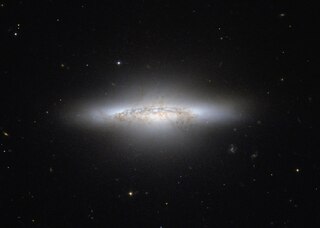
NGC 5010 is a lenticular galaxy located about 140 million light years away in the constellation Virgo. It was discovered by John Herschel on May 9, 1831. It is considered a Luminous Infrared Galaxy (LIRG). As the galaxy has few young blue stars and mostly red old stars and dust, it is transitioning from being a spiral galaxy to being an elliptical galaxy, with its spiral arms having burned out and become dusty arms. From the perspective of Earth, the galaxy is facing nearly edge-on.

NGC 7002 is a large elliptical galaxy, and a radio galaxy, around 320 million light-years away from Earth in the constellation of Indus. The galaxy was discovered by English astronomer John Herschel on September 30, 1834. NGC 7002 is the brightest member of a group of galaxies known as [T2015] nest 200093. The group contains 12 member galaxies including NGC 7004, has a velocity dispersion of 440 km/s and an estimated mass of 1.28 × 1014M☉. NGC 7002 is also host to a supermassive black hole with an estimated mass of 2.7 × 109M☉.

NGC 4473 is an elliptical galaxy located about 50 million light-years away in the constellation of Coma Berenices. It was discovered by astronomer William Herschel on April 8, 1784. NGC 4473 has an inclination of about 71°. NGC 4473 is a member of a chain of galaxies called Markarian's Chain which is part of the larger Virgo Cluster of galaxies.
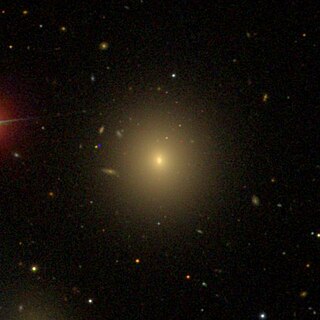
NGC 4458 is an elliptical galaxy located about 54 million light-years away in the constellation of Virgo. It was discovered by astronomer William Herschel on April 12, 1784. NGC 4458 is a member of Markarian's Chain which is part of the Virgo Cluster. It is in a pair with the galaxy NGC 4461. NGC 4458 and NGC 4461 are interacting with each other.
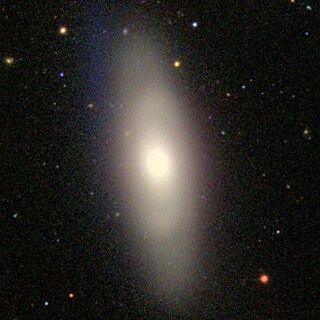
NGC 4461 is a lenticular galaxy located about 50 million light-years away in the constellation of Virgo. It was discovered by astronomer William Herschel on April 12, 1784. NGC 4461 is a member of Markarian's Chain which is part of the Virgo Cluster.

NGC 4489 is a dwarf elliptical galaxy located about 60 million light-years away in the constellation of Coma Berenices. It was discovered by astronomer William Herschel on March 21, 1784. NGC 4489 is a member of the Virgo Cluster.

NGC 4464 is an elliptical galaxy located about 70 million light-years away in the constellation of Virgo. NGC 4464 was discovered by astronomer William Herschel on December 28, 1785. NGC 4464 is a member of the Virgo Cluster.
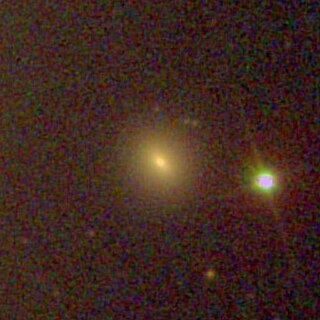
NGC 4467 is an elliptical galaxy located about 78 million light-years away in the constellation of Virgo. NGC 4467 was discovered by astronomer Otto Struve on April 28, 1851. NGC 4467 is a companion of Messier 49 and is a member of the Virgo Cluster.

NGC 4647 is an intermediate spiral galaxy estimated to be around 63 million light-years away in the constellation of Virgo. It was discovered by astronomer William Herschel on March 15, 1784. NGC 4647 is listed along with Messier 60 as being part of a pair of galaxies called Arp 116; their designation in Halton Arp's Atlas of Peculiar Galaxies. The galaxy is located on the outskirts of the Virgo Cluster.
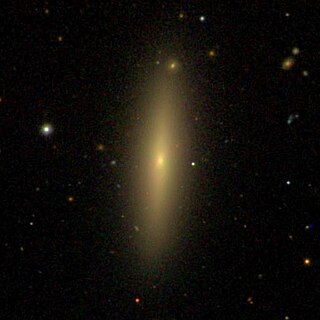
NGC 4623 is an edge-on lenticular or elliptical galaxy located about 54 million light-years away in the constellation of Virgo. NGC 4623 is classified as an E7, a rare type of "late" elliptical that represents the first stage of transition into a lenticular galaxy. NGC 4623 was discovered by astronomer William Herschel on April 13, 1784. NGC 4623 is a member of the Virgo Cluster.

NGC 4468 is a dwarf elliptical galaxy located about 55 million light-years away in the constellation of Coma Berenices. The galaxy was discovered by astronomer William Herschel on January 14, 1787. It is a member of the Virgo Cluster.
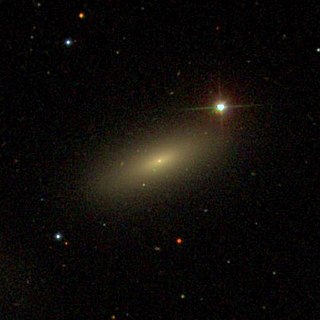
NGC 4436 is a lenticular or dwarf elliptical galaxy located about 60 million light-years away in the constellation of Virgo. NGC 4436 was discovered by astronomer William Herschel on April 17, 1784. The galaxy is a member of the Virgo Cluster.

NGC 4476 is a lenticular galaxy located about 55 million light-years away in the constellation Virgo. NGC 4476 was discovered by astronomer William Herschel on April 12, 1784. The galaxy is a member of the Virgo Cluster.

NGC 4478 is an elliptical galaxy located about 50 million light-years away in the constellation Virgo. NGC 4478 was discovered by astronomer William Herschel on April 12, 1784. NGC 4478 is a member of the Virgo Cluster.

NGC 4482 is a dwarf elliptical galaxy located about 60 million light-years away in the constellation Virgo. NGC 4482 was discovered by astronomer William Herschel on March 15, 1784. It was rediscovered by astronomer Arnold Schwassmann on September 6, 1900 and was listed as IC 3427. It is a member of the Virgo Cluster.
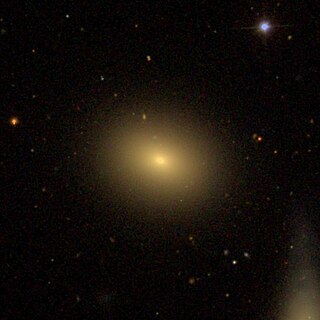
NGC 4551 is an elliptical galaxy located about 70 million light-years away in the constellation Virgo. It was discovered by astronomer William Herschel on April 17, 1784. NGC 4551 appears to lie close to the lenticular galaxy NGC 4550. However, both galaxies show no sign of interaction and have different red shifts. Both galaxies are also members of the Virgo Cluster.

NGC 4564 is an elliptical galaxy located about 57 million light-years away in the constellation Virgo. NGC 4564 was discovered by astronomer William Herschel on March 15, 1784. The galaxy is also a member of the Virgo Cluster.

NGC 4659 is a lenticular galaxy located about 54 million light-years away in the constellation Coma Berenices. NGC 4659 was discovered by astronomer William Herschel on April 12, 1784 and is a member of the Virgo Cluster.

NGC 4660 is an elliptical galaxy located about 63 million light-years away in the constellation Virgo. The galaxy was discovered by astronomer William Herschel on March 15, 1784 and is a member of the Virgo Cluster.

NGC 4306 is a dwarf barred lenticular galaxy located about 100 million light-years away in the constellation Virgo. The galaxy was discovered by astronomer Heinrich d'Arrest on April 16, 1865. Although considered to be a member of the Virgo Cluster, its high radial velocity and similar distance as NGC 4305 suggest that NGC 4306 is a background galaxy. NGC 4306 is a companion of NGC 4305 and appears to be interacting with it.




















